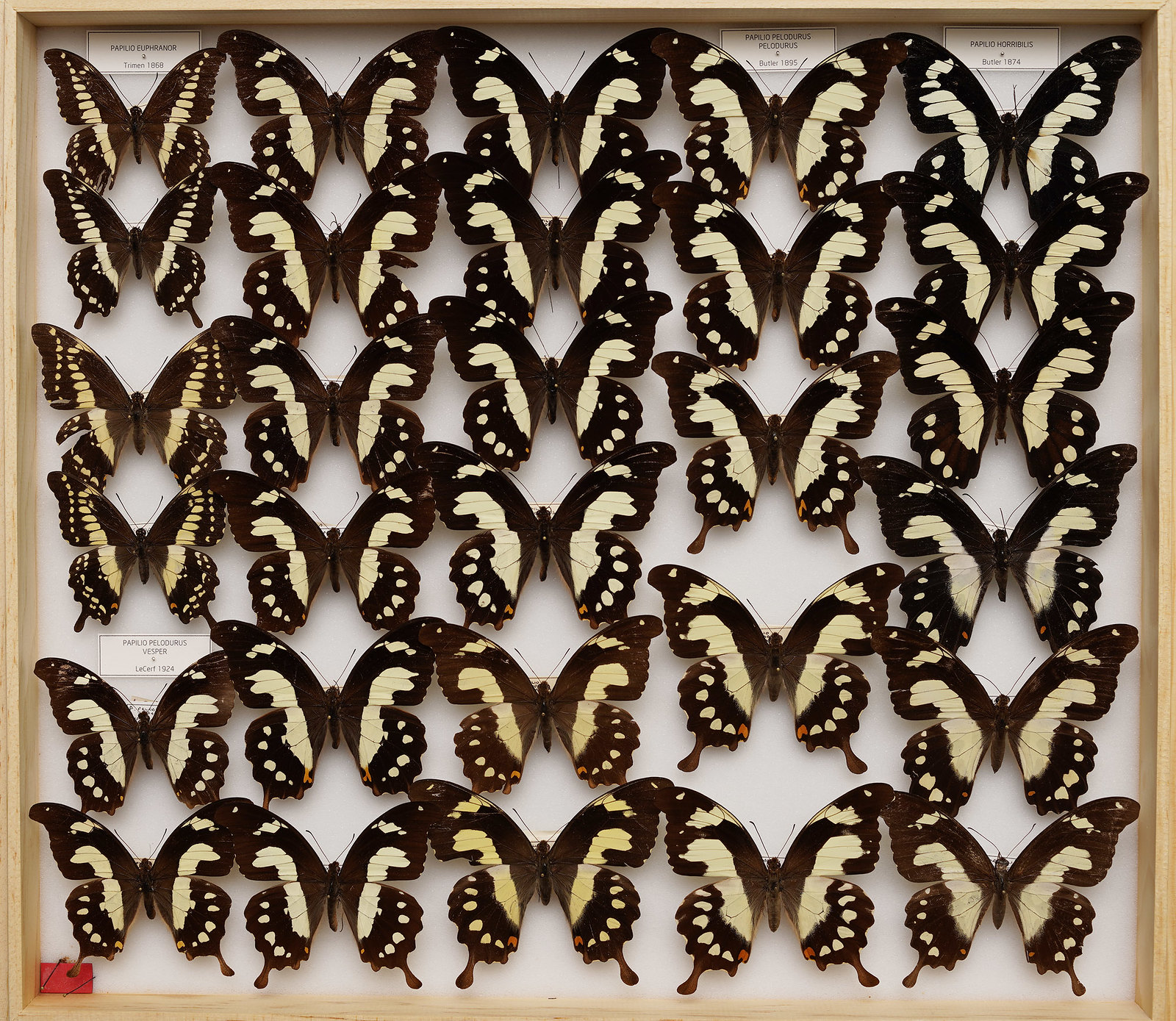|
|
Post by cabintom on Dec 23, 2018 5:50:42 GMT
The main morphological difference from the other subspecies is the unbroken FW band.
|
|
|
|
Post by deliasfanatic on Dec 24, 2018 18:28:33 GMT
Actually, I have doubts about its validity because of transitional populations from S. Malawi. I have a male that is nearly indistinguishable from the new subspecies. See column 4, #3.  p hesperus drawer 01 3219 p hesperus drawer 01 3219 by D B, on Flickr |
|
|
|
Post by Adam Cotton on Dec 24, 2018 20:49:43 GMT
While it is obvious from your specimen that some Malawi specimens may be similar to the new subspecies, if the characters defining it in the 2 mountains in Mozambique are constant then it should be regarded as a good subspecies.
Generally a susbspecies is defined as 'good' if at least a minimum of 80% of specimens share distinguishing characters. So if the odd specimen from Malawi has a similar appearance to the new subspecies, and an occasional specimen from Mozambique looks like the Malawi subspecies that would not affect the validity of the subspecies. Sometimes there can be a small amount of genetic interchange between different populations of the same species, or there may have been in the past so that characters of the other subspecies can appear occasionally.
Adam.
|
|
|
|
Post by africaone on Dec 25, 2018 9:36:17 GMT
... Generally a susbspecies is defined as 'good' if at least a minimum of 80% of specimens share distinguishing characters. ... Adam. Hi Adam, can you tell us more on this subject and/or definition. Does exist a paper about that question ? can this be applied to genetic analysis ? thanks |
|
|
|
Post by Adam Cotton on Dec 25, 2018 18:40:55 GMT
radusho, Of course this definition is not "good", but there does need to be a definition and this is the generally accepted measure of subspecies validity. africaone asked about genetic distinction of subspecies. This is a lot less useful at this level, since at least on barcode sequences subspecies may not differ at all whereas phenotypically they are distinct. On the other hand, sometimes there are obvious genetic differences between populations treated as belonging to the same subspecies since they do not appear visibly different. Eg. Martin Wiemers told me that the sequence of French and Greek Iphiclides podalirius is different but they look the same. Adam.
|
|



